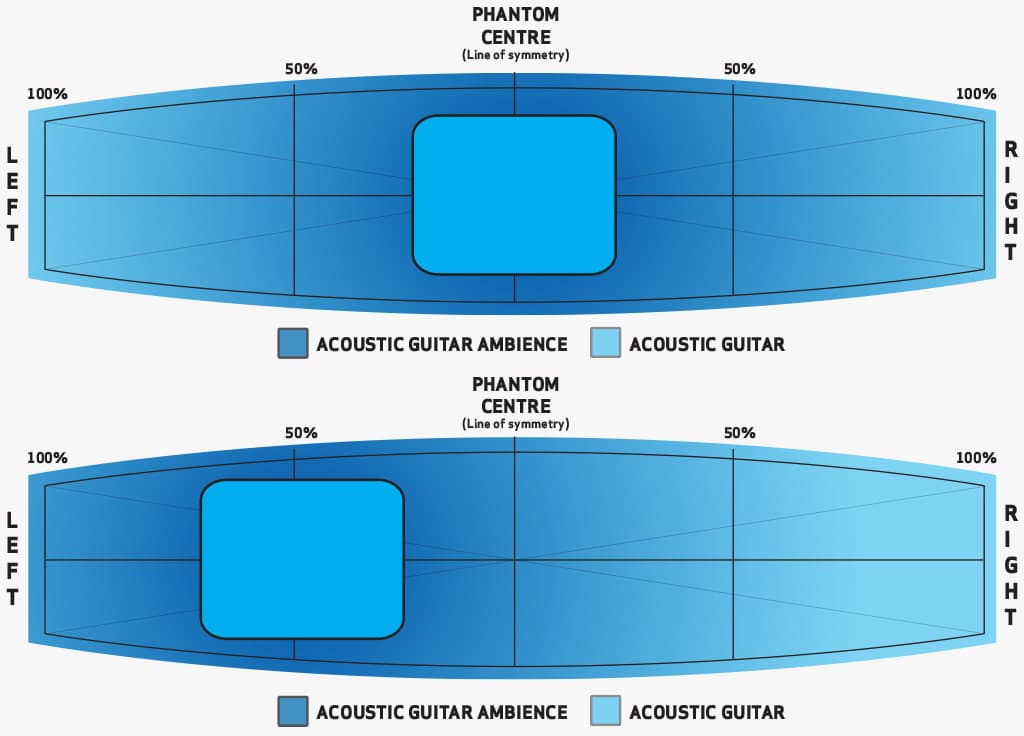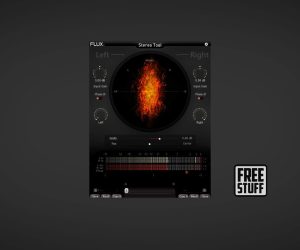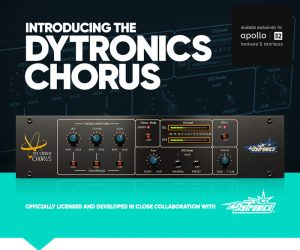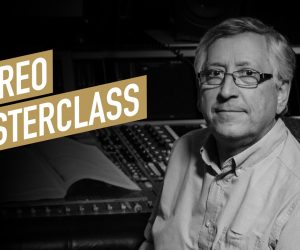
Stereo Mixing: The Art, The Science, The Fiction (Part 5 — Panning Take 2)
In this second installment of our two-part exploration on stereo panning, Andy Stewart explores some different techniques to help us gain mix perspective.
A couple of issues ago [Issue 82] I penned a tutorial on stereo panning that outlined some of the basic ways this simple sweep control can be used to recreate three-dimensional space and perspective between two speakers. This issue I’ll attempt to explore a few other panning techniques of the slightly more radical persuasion, and discuss how these influence both recording and mixing generally.
But first to a technique that’s by no means radical, just overlooked by the vast majority of engineers and musicians. It’s actually a recording technique, not a mixing tool – although ironically a lot of panning methodology used during mixdown tries to mimic its effects when it’s absent from the raw tracking. There’s no fancy name associated with it or mathematical formula designed to decode its sonic information. Here we’ll simply call it recording perspective – where two (or more) mics contribute to a picture that is fundamentally unbalanced. Stereo miking techniques needn’t always be about placing a sound source in the middle of a stereo image, after all. While this technique might seem obvious to some, almost no-one I know uses it – at least not to anything like the degree they should.
RECORDING PERSPECTIVE
The assumption that every sound source recorded in stereo should appear fundamentally in the middle of the image when two mics are panned hard left and right is a grand assumption indeed, and more than a tad ironic. Ironic because in the end, many of these recording setups sound virtually mono by the time they’re placed in a relatively complex mix.
For every stereo recording technique involving two mics placed neatly and symmetrically around a sound source there must be 1000 asymmetrical ones overlooked, either because the engineer: a) has no concept of what impact these other perspectives might have on the a final mix; b) can’t conceive how a different perspective is relevant at the time; or c) can’t commit to a sonic image during the recording phase if they do. (The issue of pwhase coherence also comes into play here, but has little or no impact on countless asymmetrical mic setups.)
The result is a missed opportunity… to discover a more interesting and compelling view of the sound source that no amount of plug-ins or digital trickery can ever hope to recreate later. At this crucial stage of a production there are myriad ways a sound can be recorded in a physical space via the imaginative positioning of a sound source relative to the mics, or vice-versa. (It’s a common misconception that mic placement has somehow become less critical in the age of non-linear digital recording. No DAW program or fancy plug-in can move a mic into a different piece of ‘air’ after the fact, only alter its time response – a different concept altogether.)
Final mix outcomes aren’t taken into account nearly often enough during the recording process, and even when they are, panning – where a sound is placed in the stereo image – almost never figures in the thinking (unless you’re a classical recording engineer). If it were, questions like this would arise more often: ‘I wonder where this acoustic guitar is going to be positioned when the track is finally mixed… maybe I should find out before I mic it up. If it’s going to be panned to one side maybe the left mic should be placed one foot away from the sound hole and the second 10 feet away and switched to omni?’
To emphasise this point, I can honestly say that for the last two years – for every song I’ve mixed that was recorded by another engineer – I cannot recall one stereo sound where the recording was crafted asymmetrically… unless the instrument itself was asymmetrical, like a piano. As a result, every time I’ve panned a stereo instrument away from the phantom centre during mixdown I’ve had to do it artificially: with pan-pots, EQ, delay and reverb etc.

Recording in stereo?: There are all kinds of ways to place an instrument off centre in a stereo mix. One approach that’s often overlooked is recording the source asymmetrically in the first place. All too often stereo pairs are used to create recordings where the source is placed in the phantom centre of the image (as per Fig.1). In many instances, a song production might have 10, 20 or even 50 elements recorded in stereo, but all too often these are captured featuring the source in the centre of the image. If the vast bulk of this stereo information is panned left and right in the final mix you can end up with a giant lump of information in the phantom centre.
Instead, why not explore the relative distances between the mics and the source during the recording session. When two mics are placed at different distances from a source, a whole world of new perspectives opens up. Paying careful attention to phase issues, try experimenting with your recorded sounds: pan the mics hard left and right before you even place them around the instrument, then place the instrument inside the stereo field using only your ears.
ALTERNATE REALITY
Placing mics in positions that create different, uneven or unbalanced – call them what you will – perspectives is a powerful way to achieve wide yet beautifully realistic final mixes without the need, in many cases, for artificial reverb, EQ or delay. Unfortunately, most people can’t typically see far enough into the production of an audio project to predict where a sound might ultimately be placed in any final mix (unless they’re recording classical music). And it’s fair enough too. It’s sometimes virtually impossible to say from the outset in a long chain of anticipated overdubs where that second acoustic guitar or fifth backing vocal might ultimately be positioned between two speakers. But that’s not to say it’s always unpredictable. It’s often quite easy to anticipate where things will be placed in a final stereo mix given certain known expectations.
Take, for instance, the example of a song that only involves the recording of one vocal and two separate acoustic guitars. In that situation it’s highly likely that the two guitars will eventually wind up being panned away from one another to some extent, and yet more often than not, despite this expectation, 99 times out of 100 an engineer will insist on recording both acoustics via an X/Y mic configuration (or similar) with no regard for their final mix perspective.
Why not? This circumstance provides the perfect opportunity to record each acoustic guitar in such a way that when the two mics around each instrument are panned hard left and right, the first guitar will end up with a ‘nine o’clock’ (left-heavy) perspective, and the other a ‘three o’clock’ (right-heavy) perspective, with the more ambient mics dominating the middle-ground. This naturally leaves space for the vocal in the centre, and a sense of depth behind the voice that may even negate the need for artificial reverb altogether. Exploring the space during tracking sessions while maintaining a careful lookout for phase issues can produce recordings that are naturally bigger, wider and more spacious sounding. For acoustic-based music in particular, the outcome can be far superior to standard mic placements followed up with artificial reverbs.
This ‘asymmetrical’ mentality can be applied to all kinds of tracking sessions of course, and involve everything from subtle imbalances that create almost imperceptible depth perspectives through to radical changes involving one close mic and a second placed 20 yards down a tiled hallway. Pan this latter combination left and right for truly mind-blowing electric guitar echo.
FLY-BYS & AUTOMATION
These days, some of the more radical forms of panning used during mixing are concocted using digital automation. Needless to say without this advanced control many of the elaborate moves we make today would be impossible. The potential for weaving these automated panning scenarios into other simultaneous mix changes – whether they be arrangement- or mute-based changes, EQ mods or compression overhauls – is literally endless.
Compelling and/or complex mix changes very rarely require the adjustment of only one technical component. Take for instance the example of a relatively simple sound that’s designed to crescendo at the end of a song’s verse, adding impact to the first downbeat of a chorus. This sound might involve some sort of combination of backwards elements – say a detuned piano and a cymbal. The obvious thing to do with these sounds is simply start them off low and ramp them up as the chorus approaches.
But there’s another more convincing technique that consistently produces superior results (to quote a popular washing detergent commercial). Although it’s a more complicated operation involving a balance of automated moves all working together, once you get used to working this way it quickly becomes second nature. In combination with automated volume, EQ and reverb, panning changes can be used in this instance to create the illusion that our sounds are genuinely coming at us with 3D-like realism. You can’t achieve this by simply increasing their volume.
Let’s starts with our collection of backwards elements first appearing imperceptibly low in the mix. When they first kick-in, they’re mono – either placed in the dead centre of the stereo image or off-centre; it doesn’t matter, so long as they form a point source on the horizon, as almost any object would. The sound montage is also very wet initially (perhaps 80% or so, with no predelay) and EQ’d to possess less top and bottom end. As the sound races towards us for the dramatic arrival of our chorus, the sound changes in several ways all in the space of a few seconds: the source sounds get louder (via volume automation); the reverb dries up, and as it does, increasing the predelay helps isolate the sound from its reverberant surrounds (and the bigger the predelay, the larger the environment our sound appears to have raced towards us from); the fidelity of the source sounds improves by restoring top and bottom end (again via plug-in automation), and finally the panning spreads from mono to stereo as the sounds quickly take up our entire field of vision. In the case of this specific example – where the sound effect is made up of two distinct noises – it might be interesting to pan one sound to the left and the other right in the last half-second of the crescendo, to create the impression that the two sounds have raced towards us from afar and then flown past either side of our head at the last moment.

Panning automation helps generate focus: In the three illustrations left, a simple mix arrangement featuring a lead guitar (coloured red) is replaced by a vocal (coloured orange). As the lead guitar fades naturally away its panning automation pulls the instrument left, simultaneously ushering in the vocal from the right in a simple switch of focus.
This is but one small example of how lead elements that overlap musically can be made to work together. Rather than simply separating the overlapping elements left and right, it may be more effective to have them trade places if the timing seems appropriate. The simplest way to find out if this method will work is to try it. If the two elements clash too much you may need to try something else, but the devil may be in the detail. If the crossover period is only a few bars long it may be worth trying to modify the volume, tone and spatial automation of the first instrument, to ‘soften’ it as it fades, while sharpening the second instrument as it comes into focus.
Establishing a panning regime for a song is a subtle art that takes practise. Developing an awareness of what elements should make up the framework for your mix is an important aspect of panning to master. This may involve a bit of experimentation at first. You may go through several changes of scene before settling on the one that provides the right framework for the music. Your first placement decisions may suck – no matter how experienced you are – so it’s vitally important to the success of the mix that you remain open to change at any point. Be honest with yourself, and above all else listen to the song, paying careful attention to the arrangement.
Get to know what instruments come in and out, and when and what role each one plays. Pick out the featured instruments among them and keep interest in the stereo field by sharing the focus of these elements around. If one strong riff comes in far left, the longer it plays over there the more it will create a temporary imbalance in the stereo image. This is resolved best by filling the space opposite with the next featured element. There’s no point having all the hooks coming in on one side, you’ll eventually just tip over! Share the focus around, keeping in mind that these switches of perspective work best when the core framework – made up of elements that don’t change (or change very little) – are balanced and rock solid.
CONSCIOUS OR UNCONSCIOUS?
But not all panning is about sound effects is it. Unlike the example above, the bulk of panning that contributes to the creation of fantastic mixes doesn’t necessarily figure in the consciousness of the listener at all. Even panning that’s movement based can be divided into two basic categories: movement that can be tracked (ie. witnessed) by the listener – like our backwards crescendo example – or panning automation that’s crafted to function invisibly as part of a sound itself. Here are some other brief examples of both:
• A rapid-fire autopan setting that makes a sound shake or shimmer in the stereo image might go unnoticed by a listening audience but add greatly to the impact of song transitions. Typically derived from an outboard effect or plug-in, fast autopan on drum overheads at the transition points of a song can make the drum sound ‘shake’, adding impact where the performance might have understated the transition.
• Big effects on things like vocals etc – basically anything that plays a significant role in a mix – can sometimes benefit from their own movement, particularly at key points in a production. Sometimes a particularly long and vivid reverb tail can sound more 3D if it reduces from stereo to mono as it fades, inferring depth and horizon-bound movement. Whether this change goes unnoticed or conversely becomes a dead-set hook is hard to predict.
• Sounds can also appear to be moving without there being any panning automation at all. For example, recording two similar tremolo electric guitar performances with different speed and depth settings on the amp can generate some truly ‘wide and wobbly’ mix interest. Again, the recording process does all the work here; all the mix engineer has to do is pan the two recordings apart and leave the instruments to it. Panned in wide stereo, the two individual sounds appear to wobble as one in an unpredictable manner. Again, nothing is being pan-automated as such; the two individual (though similar) sounds are simply rising and falling in volume independently of one another – your brain does the rest.
• Non-core rhythm elements or melodic phrases can sometimes be shared between both speakers: one phrase voiced in the left, the next in the right, and so on back and forth. Panning instruments that are intentionally designed to be elusive in the mix in a constant, even unpredictable, manner is another good way to conceal them without turning them down.
‘TECHNICAL’ PANNING
Where panning goes almost undetected, yet has arguably the greatest impact on a mix is where it helps choreograph ‘focus’, and fundamentally, instruments panned dead-centre tend to command greater focus than things panned hard to one side (though not always).
All good mixes have an element of ‘focus’ control about them, whereby different instruments are brought to a listener’s attention at different points along a timeline. But regardless of whether this manipulation is done subtly or bluntly, panning often plays a significant role. Here are some other examples.
Pan automation is great at subtly ‘moving things aside’ as a new element steps into the limelight. Take a guitar lead break that plays through an instrumental chorus, across the transition and into the next verse before the finally trailing off. As the performance falls away, panning the guitar from dead-centre to the middle-left while simultaneously increasing the space around it (with reverb, delay or room mics etc) emphasises its retreat, and fluidly anticipates the approach of the next new focus element that’s swinging into view in from the middle-right and panning dead-centre as it reaches its maximum volume.
A song’s plainly-strummed intro acoustic guitar might start off mono but then spread slowly left and right in anticipation of the arrival of the main vocal, by panning the close guitar mic left and adding a second ambient mic to the equation on the right-hand side. This works well if you perform the shift just as the vocal kicks in. That way the change of spatial balance occurs as if by magic. If you perform the shift too early and the trick’s mechanics are revealed this manoeuvre can sometimes sound dodgy, although occasionally this exposure is a good thing, maybe even a hook – it’s impossible to say until you try it.
Backing vocals might sit well panned, say, 60% left/right around a main vocal but then open out to 85% when the chorus hits. Sounds that draw focus as they grow louder in the centre of a mix can sometimes feel as though they’re pushing other elements aside that were previously panned to the middle-left or right. If that seems to be the case, act on your instinct: as something grows louder in the centre, pan things slightly wider to accommodate it. Then, as the sound recedes, close ranks back in around it. Almost no-one will notice this happening, not even the artist half the time, but it keeps the mix sounding fluid in an unconscious way, and in some situations creates the illusion that the mix is alive without people really ever grasping how or why. This is a particularly important skill to hone when you’re working on material that superficially requires ‘no production’ or visible signs of mix tampering. Flexibility is one of the greatest gifts 21-century DAWs have provided us and automation is one of the most advanced tools in the shed.
A WORD ON MOVEMENT
Panning that’s fixed in position – ie. doesn’t move – during the course of a production is relatively simple to craft, and for these static audio elements, the overall balance that panning establishes between the left and right speakers is crucial to the final outcome. For ‘on the move’ sounds, however – moving either because the source was shifting its position during tracking (like a rallycar flying past a fixed mic position etc), the mics were spinning on a turntable while you were recording, or panning automation is being deployed – the mix balance becomes trickier. There are several reasons for this, all of them subjective and ultimately resolved only by your own intuition and taste.
The key to understanding which explicit panning movements best benefit your mix involves knowing what roles these instruments that you’re setting in motion are performing in the first place. Panning a main vocal all over the place, for example, would only likely prove annoying to most listeners. Judging whether or not movement of this type adds to, or detracts from, your final mix is a personal judgment call that only you and those around you can make. My two-bob’s worth on the subject would be that if an explicit panning shift seem gratuitous or silly within the context of the overall mix, ditch it.
Sometimes movement for the sake of it can feel tacky, and undermine the contribution that sound or instrument is making. At other times it’s ‘cool’ and has the capacity to hook the listener in. Judging the difference is a nebulous affair that takes practice and involves making a mistake or two along the way.
In the end, a mix usually comes across best when it features (or invisibly contains) a combination of static and automated panning setups. If it’s all static, the mix can tend to feel a little boring (but hey, maybe ‘boring’ suits the song!). Conversely, if everything is on the move, your mix may start feeling like a tank of tropical fish: every element too flashy, everything hard to focus on. Sturdy static elements help anchor a mix and allow movement-based components to create extra interest. Like all this stuff, in the end it tends to come down to the tasteful balance of ideas rather than an over concentration of one.
EXPLORING THE SPACE
Panning ultimately allows you to craft a stereo image to suit a collection of audio elements presented to you. Like all mixing, there is no ‘one way’, no ‘rule that always applies’. While panning can be one of the most elusive aspects of recording and mixing, it’s also one of the most powerful. Significant aspects of it relate to the ‘illusion of depth and width’, and like all good illusions, the trick only works if it’s performed in harmony with all the other elements. Once you start to discover its potential you’ll be opened up to more space than you ever thought was possible between two speakers.
















RESPONSES